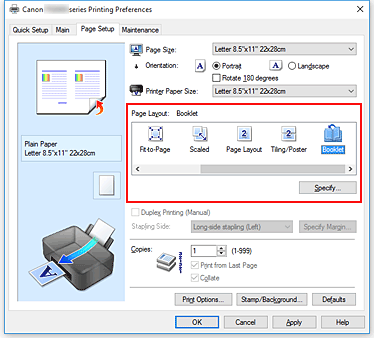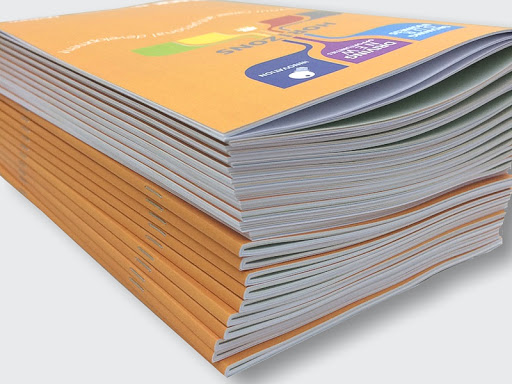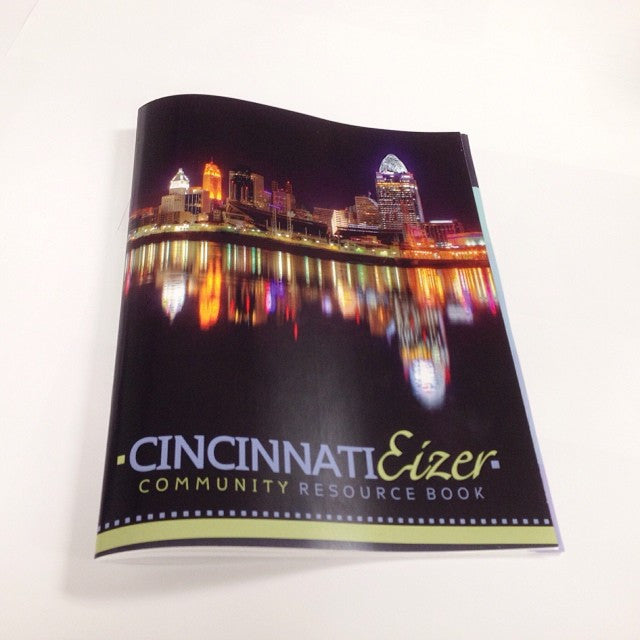Unlock the Power of Augmented Reality in Your Booklet Printing Projects
Unlock the Power of Augmented Reality in Your Booklet Printing Projects
Blog Article
The Crucial Guide to Recognizing Pamphlet Printing Options and Techniques
The procedure of brochure printing entails multiple factors to consider that can substantially influence the end product. From picking the appropriate layout and dimension to comprehending the nuances of binding techniques, each choice plays an essential function. Additionally, aspects such as paper stock and printing methods further influence the performance of the booklet. As one browses these options, it comes to be imperative to realize exactly how they interconnect and what that implies for the general outcome.
Recognizing Booklet Layouts and Sizes
When taking into consideration brochure printing, understanding the numerous styles and dimensions readily available is vital for achieving the wanted presentation. Booklets can be created in numerous layouts, including saddle-stitched, spiral-bound, and perfect-bound, each offering unique benefits. Typical dimensions range from typical letter (8.5 x 11 inches) to smaller alternatives like A5 (5.8 x 8.3 inches), enabling adaptability based on material and target audience.Selecting the ideal size can influence both the format and reader involvement. Bigger dimensions might fit aesthetically driven content, while smaller formats may be extra straightforward and mobile. In addition, the number of web pages influences the option of binding technique, as thicker brochures might call for stronger bindings. Eventually, understanding these facets permits a much more customized technique, making sure that the end product lines up with the intended message and aesthetic, improving the total effectiveness of the communication.
Selecting the Right Paper Supply

Binding Methods: Alternatives and Considerations
When it concerns binding techniques for booklets, a number of options are offered, each with unique advantages. Saddle stitch binding uses an affordable remedy for thinner booklets, while ideal binding strategies offer an even more refined search for thicker magazines. Wire-O binding sticks out for its durability and ease of use, making it suitable for documents that require versatility.
Saddle Stitch Binding
Saddle stitch binding supplies a economical and functional service for setting up pamphlets, making it a preferred selection amongst organizations and authors. This binding approach entails folding sheets of paper in fifty percent and stapling them along the fold line, producing a organized and neat look. Typically suitable for booklets with a reduced web page matter, saddle stitching is excellent for publications, sales brochures, and educational products. The simplicity of this strategy enables fast production and is typically favored for advertising items or brief runs. Nonetheless, it is important to note that saddle stitch binding might not be appropriate for thicker pamphlets, as the spine may not hold up under increased weight. Generally, it remains a dependable alternative for many printing projects.
Perfect Binding Strategies
Perfect binding is a commonly used strategy that offers a polished and professional surface to booklets and magazines. This technique entails gluing the pages with each other at the spinal column utilizing a solid adhesive, permitting a tidy edge and the ability to hold a larger variety of pages compared to saddle sewing. Perfect binding is especially appropriate for thicker brochures, such as brochures and annual records, where a durable, flat spine is desired. In addition, it provides the alternative for a printed cover that can be made to enhance aesthetic allure. Nonetheless, considerations such as page matter, paper weight, and the intended usage of the booklet must be taken right into account, as they can affect longevity and overall high quality.
Wire-O Binding Options
Wire-O binding, recognized for its longevity and adaptability, uses an exceptional choice for booklets that call for simple web page transforming and a professional appearance. This binding method employs a series of steel loops that hold pages securely, allowing them to lie flat when open. It is specifically ideal for handbooks, presentations, and brochures because of its robust nature. Wire-O binding is available in various shades and sizes, fitting different page counts and densities. In addition, it allows the addition of covers and tabs, improving the brochure's overall aesthetic. Factors to consider for Wire-O binding consist of the option of cord shade, the size of the loopholes, and the degree of modification preferred, every one of which can exceptionally influence the end product's look and functionality.
Digital vs. Offset Printing: Which Is Best for You?
When picking a printing approach for booklets, understanding the distinctions in between digital and counter printing is essential. Digital printing makes use of contemporary technology to produce high-quality prints quickly and affordably, making it perfect for short runs or jobs requiring quick turnaround times. It enables modification, giving the ability to publish on-demand with marginal waste.In comparison, counter printing is a standard method that masters creating big quantities with constant quality. It includes moving ink from a plate to a rubber blanket, then to the paper, which leads to vibrant shades and precise details. However, balance out printing typically see this page calls for longer arrangement times and is more economical for bigger volumes.Ultimately, the option in between digital and offset printing depends on project demands, spending plan, and desired amount. For small, time-sensitive projects, electronic may be the most effective option, while countered might be preferable for bigger, top quality productions.

Designing Your Brochure: Tips and Best Practices
When designing a booklet, careful focus to format, font selection, and color usage can substantially boost its efficiency. A well-structured layout overviews the viewers's eye, while proper fonts guarantee advice readability and share the wanted tone. In addition, reliable use color can stimulate feelings and highlight crucial information, making the general style extra impactful.
Picking the Right Format
Just how can one effectively select the ideal design for a booklet? Initially, it is necessary to assess the booklet's function and target market. A tidy, organized layout boosts readability and interaction. Making use of a grid system can help in aligning components constantly, producing a specialist appearance. In addition, integrating visual hierarchy with varying sizes and placements of photos and message can lead the reader's eye and stress key information. It is also vital to leave enough white space, which protects against congestion and enables much better emphasis. Checking various layouts through mock-ups can supply understanding into exactly how the layout performs in real-world situations, making sure that the last item satisfies both visual and functional demands.
Choosing Suitable Fonts
An appropriate font can substantially improve the overall style of a booklet, matching the layout and enhancing the material's message. The choice of fonts ought to think about readability, particularly for body message, as it ensures the info is easily accessible to all readers. Sans-serif font styles are usually preferred for electronic layouts, while serif typefaces can provide a standard feeling in printed materials. It's recommended to limit font selections to two or three to preserve visual comprehensibility. In addition, typeface size plays an essential role; headings should be unique yet not frustrating, while body text ought to be comfortable for reading. When picking font styles, positioning with the brochure's theme and target audience is essential for reliable interaction and aesthetic appeal.
Reliable Use Shade
Color acts as an effective tool in brochure design, directing and forming understandings reader feelings. It can evoke sensations of exhilaration, count on, or peace, depending on the tones chosen. Designers should consider shade concept principles, making sure that the picked palette lines up with the pamphlet's message and target audience. Making use of cozy colors like red and orange can create seriousness, while cooler tones like blue and environment-friendly foster tranquility.Additionally, contrast plays an important function; corresponding shades can boost readability and aesthetic charm. Uniformity in shade use throughout web pages further strengthens brand name identification and cohesion. Ultimately, effective color application not only catches attention but also strengthens the brochure's function, making it a crucial facet of effective layout.
Ending Up Touches: Coatings and Unique Impacts
While lots of take into consideration the content and layout of a pamphlet one of the most essential components, the ending up touches, such as coatings and special results, play a crucial duty in boosting its general appeal. Coatings can offer protection and sites resilience, guaranteeing that the booklet holds up against damage. Matte surfaces provide an innovative, non-reflective surface, while glossy finishes can make colors show up even more appealing and vibrant. Unique impacts, like embossing or foil stamping, include a tactile dimension that can create an unforgettable perception. These methods can highlight certain areas, accentuating essential details or creating aesthetic rate of interest. Additionally, UV layer can supply a high-shine finish that boosts the overall look.Together, these ending up touches not only enhance the booklet's aesthetic but likewise connect expertise and attention to information, eventually leaving a lasting effect on the reader.
Expense Factors To Consider for Booklet Printing
Recognizing the different price considerations for brochure printing is essential for services and organizations intending to maximize their budgets. Secret variables influencing prices include the option of paper, ink, and binding techniques. Better products, such as premium paper or specialized inks, usually raise the overall expense. Furthermore, the size and web page matter of the pamphlet play a significant function; bigger pamphlets require more resources and time to produce.Another crucial factor to consider is the printing strategy, whether electronic or offset, as each has its very own pricing structure and suitability for different quantities. Services must likewise factor in design costs, which can vary based on intricacy and making use of professional services. Ultimately, shipping and handling fees can include in the total, particularly for big orders. By examining these components, companies can make educated decisions that straighten with their financial capabilities while achieving the preferred top quality in their published materials.
Frequently Asked Concerns
What Are the Ecological Impacts of Booklet Printing?
The environmental effects of booklet printing include logging from paper manufacturing, carbon discharges from transportation, and waste generation from discarded products - Booklet Printing. Sustainable practices, such as making use of recycled paper and environment-friendly inks, can mitigate these effects
Just How Can I Make Certain Color Precision in My Pamphlet?
To assure color precision in a brochure, one ought to make use of adjusted screens, employ specialist shade profiles, conduct examination prints, and choose top quality printing services that use shade matching and proofing choices for best results.
What Is the Normal Turnaround Time for Pamphlet Printing?
The normal turn-around time for brochure printing varies relying on the complexity and amount - Booklet Printing. Typically, it varies from a few days to two weeks, affected by elements such as publishing methods and ending up demands
Are There Minimum Order Quantities for Pamphlet Printing?

Can I Print Pamphlets in Several Languages?
Publishing pamphlets in multiple languages is possible. Numerous printing solutions use alternatives for bilingual or multilingual layouts, permitting effective interaction. Mindful planning guarantees that develop aspects fit different languages without endangering readability or visual appeals. Furthermore, aspects such as paper stock and printing methods further influence the performance of the booklet. When thinking about pamphlet printing, understanding the numerous formats and sizes offered is essential for attaining the desired presentation. When selecting a printing approach for pamphlets, recognizing the distinctions between digital and offset printing is essential. Additionally, the dimension and web page count of the booklet play a considerable function; larger booklets call for even more resources and time to produce.Another essential consideration is the printing technique, whether electronic or balanced out, as each has its own pricing framework and viability for different quantities. The environmental impacts of pamphlet printing include deforestation from paper manufacturing, carbon discharges from transportation, and waste generation from discarded materials.
Report this page